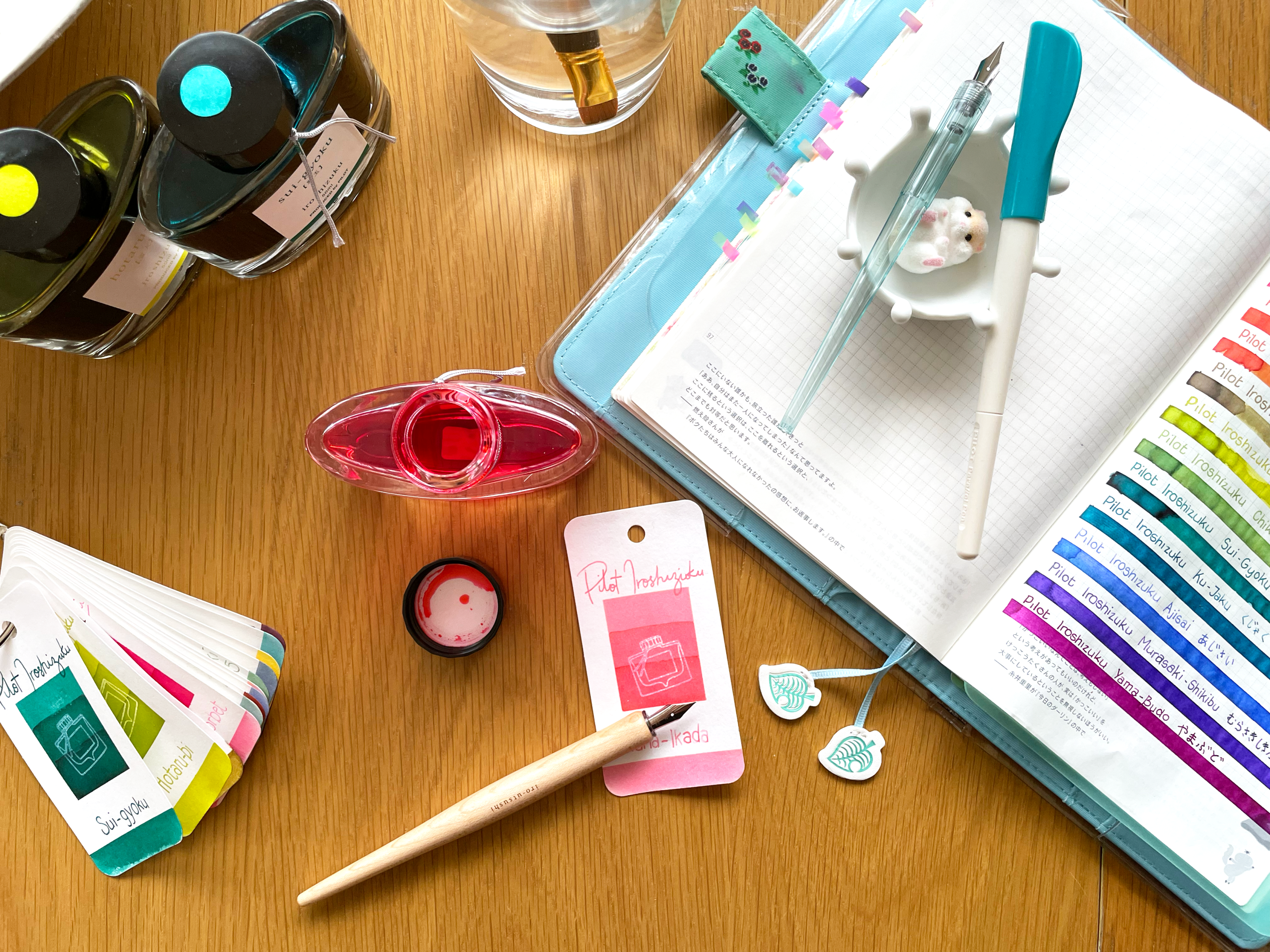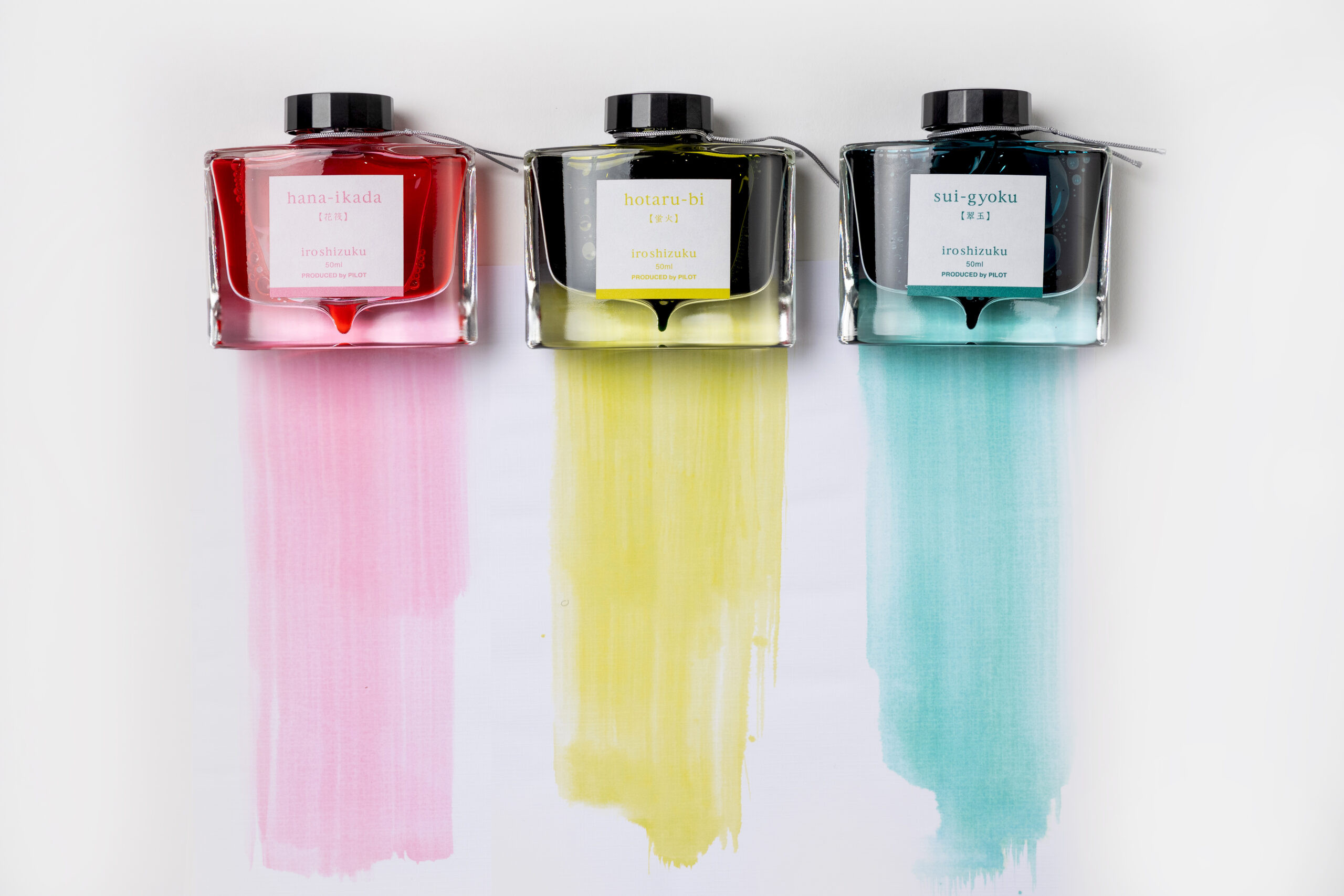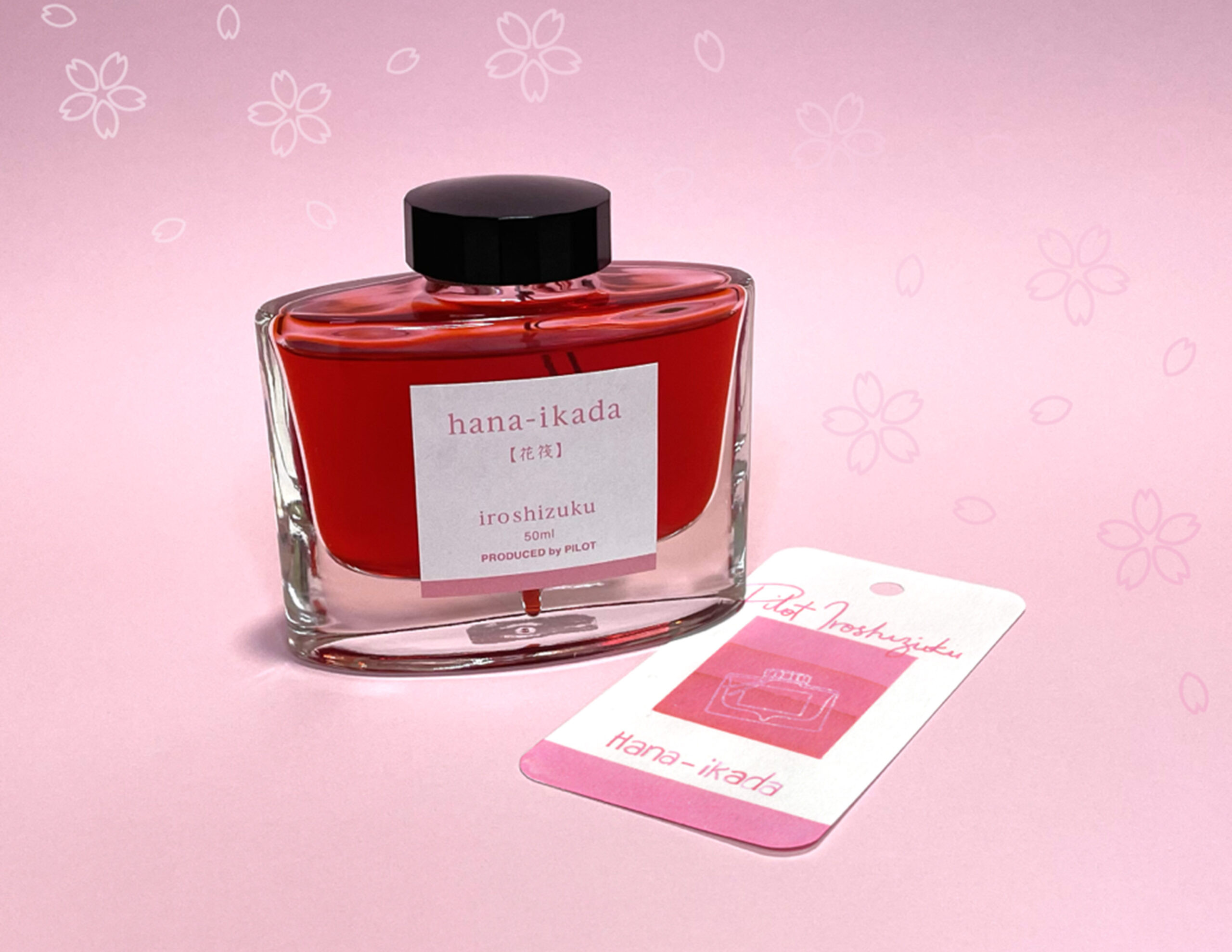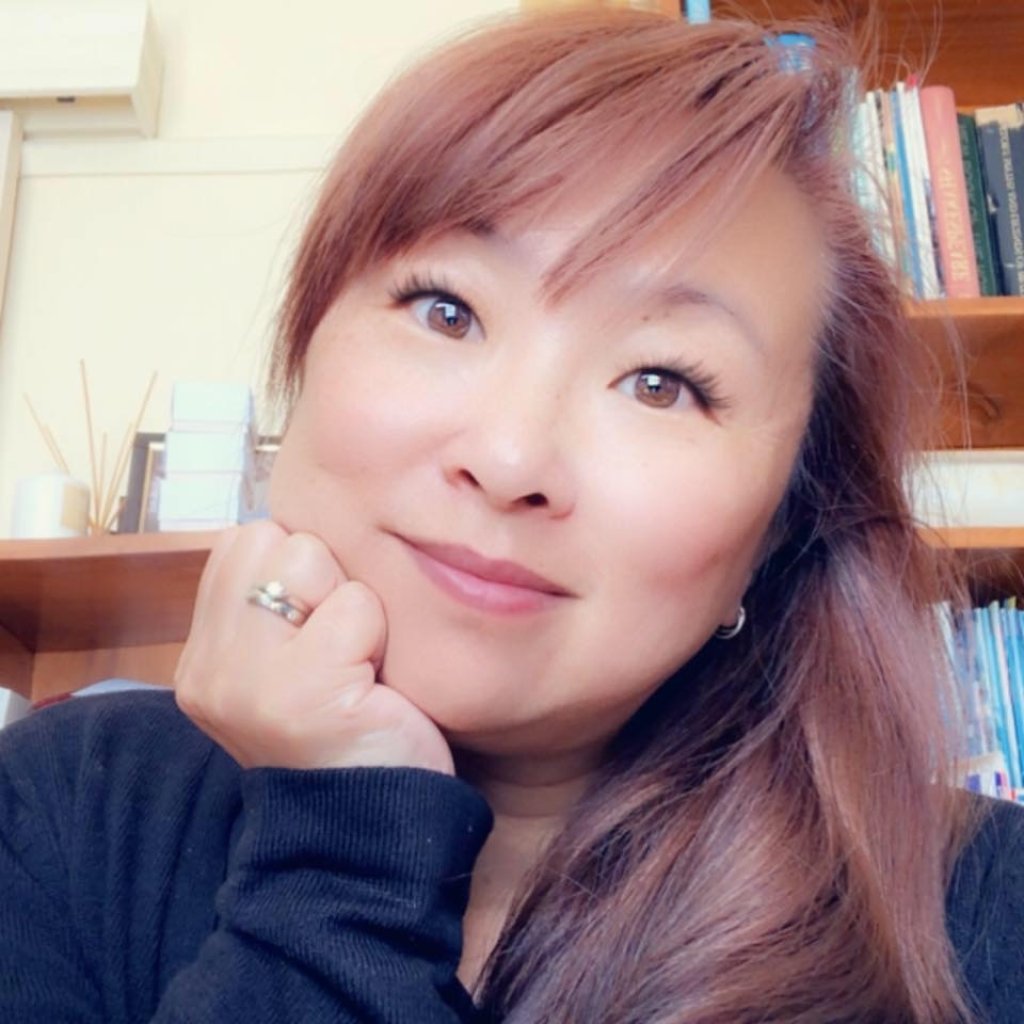Self-confessed Japanophile and Graphic Designer, Aileen shares her love of fountain pens and ink with PILOT and how she creates ink swatches that beautifully capture the character of PILOT's iroshizuku inks.
Step by Step Video Guide
1. How did you get into fountain pens and ink?
I was born in the U.K. and at the school I attended, we were all taught to use fountain pens after learning how to write with pencils. I guess it was the equivalent of getting your pen license here, in Australia. However, I didn’t fall in love with fountain pens and fountain pen inks until much later, when I was an adult.
Being a left-hander, I have always struggled to use ball-type pens, whether they are ballpoint or rollerball. As a left-hander, the “pushing” motion of left-handed writing always wrecks the ball mechanism of any ball pen I have ever used – for me, they usually “die” within a couple of weeks of use, still full of ink. I had always found writing very frustrating and quite expensive, over time.
Then one day, I was watching an online stationery store’s YouTube video – because I am a hardcore stationery addict and willingly spend ridiculous amounts of money on all sorts of stationery – and it suddenly dawned on me that there was actually no moving mechanism in a fountain pen nib that I could wear down or ruin (with conventional usage), and I have not looked back since.
2. What motivated you to start collecting and sharing online?
I am a proud, self-confessed hoarder of stationery. Between you and me, I probably could open up my own stationery store with what is sitting on shelves and in cupboards (... oh
wait, I already have!) I am also a completionist, which is a terrific personality trait for video games, but not so great for stationery – things can get out of hand very quickly if items come in sets of two or more. However, the beauty of fountain pens is that they tend to keep their relative value, if not increase over time, particularly with regards to the limited edition, region/store exclusive pens and inks that I gravitate towards. So it is more like financially investing, yes, let’s go with that.
As for “the sharing online” part, it seems like it’s a thing to do in this community. I didn’t really Instagram before finding re-discovering fountain pens; I think I had about six photos
in my account before posting my first fountain pen-related photo. I am also not very consistent with posting, I can be quite sporadic. I think that perhaps it’s a generational thing for me, (I am Gen-X: LPs, VHS, Walkmans, phones with curly cords, and the original Polaroid photographs). I often forget to take photos in-the-moment, because I am enjoying being in the moment too much to remember to take any photos at all. Then I wish I took photos of those moments, in retrospect.
But I am also a pretty rubbish photographer, so it’s a lucky thing that iPhones are so easy to use and the pens and inks are so pretty and do most of the hard work.
 3. Why do you think the fountain pen and ink community has grown as much as it has over the past 5 years – especially in Australia?
3. Why do you think the fountain pen and ink community has grown as much as it has over the past 5 years – especially in Australia?
I don’t have any empirical evidence to back my claims, but I think it has a lot to do with social media algorithms and the people you naturally connect to. Australia isn’t known for
its love of stationery, I mean, let’s face it, the best an average person can find is in a big box store.
So the fact that there IS an actual fountain pen community here, is quite incredible, and what’s even more extraordinary, is the fact that most of us have found each other on social media, and we revel in the fact that we are not alone anymore. I feel we all sort of know each other (or at least know OF each other’s online personas) thanks to these algorithms and shared hashtags, and it is a big comfort being able to share our uncommon obsessions with people who don’t just look at you weirdly.
4. Which iroshizuku inks are your favourite at the moment and why?
I have always been in love with iroshizuku Kosumosu, in fact, it was the very first bottle of ink I ever bought, thinking I’d never finish a big 50ml bottle. It was a wee 15ml bottle and when I finished it I bought another two more 15ml bottles. In hindsight, I would probably would pretty close to finishing a whole big bottle by now, though. Mind you, the new Hana-ikada is certainly a strong contender to Kosumosu ... I do like pink!
5. What are a few influences or passions that have inspired you to be creative in your day to day life?
I love all things Japan. Saying I was a Japanophile would be a gross understatement. The goal for me would be to live there. I am learning the language, and I love discovering new things about the culture, daily. I have recently been learning how to make wagashi (sweet/cakes) and wear kimono and yukata, and the one key takeaway from these learnings is that the Japanese are incredibly naturally skilled when it comes to the science of using colour. For instance, the effortlessness with which a kimono stylist is able to use unexpected colour combinations in kimono and obi is remarkable and astonishing. I feel like perhaps this has something to do with the way the Japanese people experience the seasons, and invariably, the nature that surrounds them.
Japan has four main seasons, just like many other countries, but they also secretly have 24 mini-seasons. These are called せっき (sekki), and each sekki relates to specific seasonal transitions. And then, these せっき are divided into a further 72 micro-seasons, called こう (kō).
These itty-bitty seasons are described so poetically, for example:
• Season of rainwater – Mist starts to linger (February 24th to 28th)
• Season of lesser heat – First lotus blossoms (July 12th to 16th)
• Season of frost falls – Maple leaves and ivy turn yellow (November 2nd to 6th)
I take creative inspiration from things like this, the simple pleasures that I try to discover every day; through these things, I can live in a state of constant childlike wonder. And in turn, I love sharing the joy of these little things, the stuff that makes me happy. I don’t think this answered your question, but it kind of feels right.
 Specifically formulated for fountain pens, PILOT iroshizuku inks offer a superior quality writing experience. Their ability to dry relatively quickly means less smudging on paper and very little residue left behind in your pens, making it easier to clean them after use so that you can enjoy a variety of colours with the same pen. They are inks that flow smoothly as your nib glides across the paper leaving behind a generous amount of uninterrupted colour and strokes of subtle variations of shading with a gorgeous sheen.
Specifically formulated for fountain pens, PILOT iroshizuku inks offer a superior quality writing experience. Their ability to dry relatively quickly means less smudging on paper and very little residue left behind in your pens, making it easier to clean them after use so that you can enjoy a variety of colours with the same pen. They are inks that flow smoothly as your nib glides across the paper leaving behind a generous amount of uninterrupted colour and strokes of subtle variations of shading with a gorgeous sheen.
About Author
Aileen Smith
Aileen Smith is a Graphic Designer and Ice Cream Addict. She is a self-confessed nerd and Japanophile who runs a small store and has a growing collection of fountain pens and inks that she shares on instagram under @illegal_aileen.







